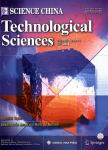Analysis of driving forces of water demand in Jing-Jin-Ji district in recent years based on water demand field theory
Analysis of driving forces of water demand in Jing-Jin-Ji district in recent years based on water demand field theory作者机构:College of New Energy and EnvironmentJilin UniversityChangchun 130021China State Key Laboratory of Simulation and Regulation of Water Cycle in River BasinChina Institute of Water Resources and Hydropower ResearchBeijing 100038China School of Transportation and Civil Engineering&ArchitectureFoshan UniversityFoshan 528000China
出 版 物:《Science China(Technological Sciences)》 (中国科学(技术科学英文版))
年 卷 期:2020年第63卷第12期
页 面:2593-2605页
核心收录:
学科分类:0810[工学-信息与通信工程] 082802[工学-农业水土工程] 08[工学] 0828[工学-农业工程] 0805[工学-材料科学与工程(可授工学、理学学位)] 0702[理学-物理学] 0812[工学-计算机科学与技术(可授工学、理学学位)]
基 金:This work was supported by the National Key Research and Development Program of China(Grant No.2016YFC0401401) the National Natural Science Foundation of China(Grant Nos.51739011&51879274) the Research Fund of the State Key Laboratory of Simulation and Regulation of Water Cycle in River Basin(Grant No.2017ZY02)。
主 题:water demand field degree of social development driving forces of water demand
摘 要:In recent years,urbanization has accelerated and the gap between urban water supply and demand has become more significant.This phenomenon has led to greater demands on urban water resource management. Thus,analyses of the forces that drive urban water demand growth can help efficient management of urban water resources. Jing-Jin-Ji refers to the district composed of Beijing and Tianjin,municipality as well as Hebei Province,which is among the political and economic centers of China. The traditional analysis of driving force for water resources often consider cities as independent individuals and ignores the interaction between them. Such method cannot describe the spatial distribution of regional water demand. In this study,the water demand field theory is used to construct water demand and social development fields for the Jing-Jin-Ji district with relevant indicators. The distribution trends of the two fields,and the correlation of their intensities,are then analyzed. Principal component analysis is used to specifically determine the forces that drive water demand at different stages of development.Results indicate that the water demand field theory can accurately describe spatial variations in water demand intensity in the study area. The main driving force for water demand in the Jing-Jin-Ji district from 2000 to 2014 is the growth of urban population. However,in 2015 and 2016,GDP of the tertiary industry overtook it. The results of this study can serve as a basis for regional water demand forecasting,with large potential to be applied to urban water resource management.



